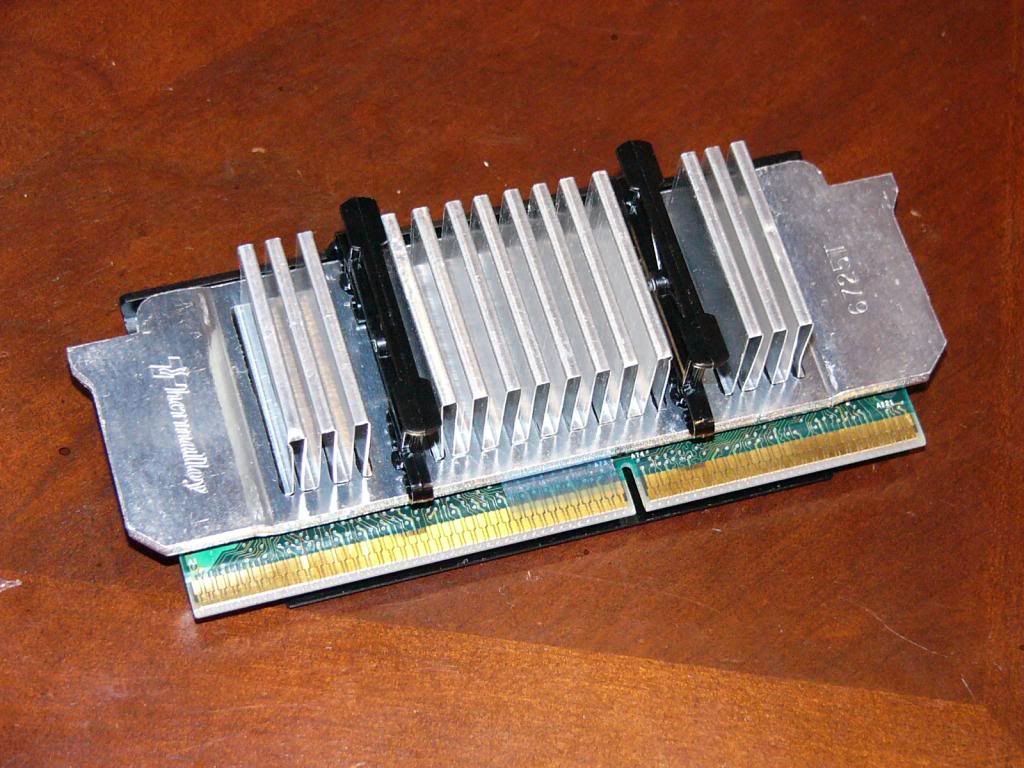Yes, unfortunately, my heatsink is the one shown above. I was feeling a little adventurous (or stupid) tonight, and tried it out without a fan. It was recognized by the BIOS as a PIII 650 (a good sign), but the power automatically cut off about ten seconds after Windows booted up. When I powered on again, I saw the following message before the Windows 98 splash screen: "Alert! Previous thermal failure." I put the old CPU back in, and everything seemed fine, so no harm done, probably.
So, I won't try this again without a fan. However, I have another question now. Does a Slot 1 motherboard automatically sense the temperature of the CPU, enough to cut the power if it gets too hot? Or is there some kind of fan sensor header that needs to be connected to a fan? This is a Dell Optiplex GX1. Also, does that piece of bluish film look normal? It seems to be placed between the CPU and the sink.




